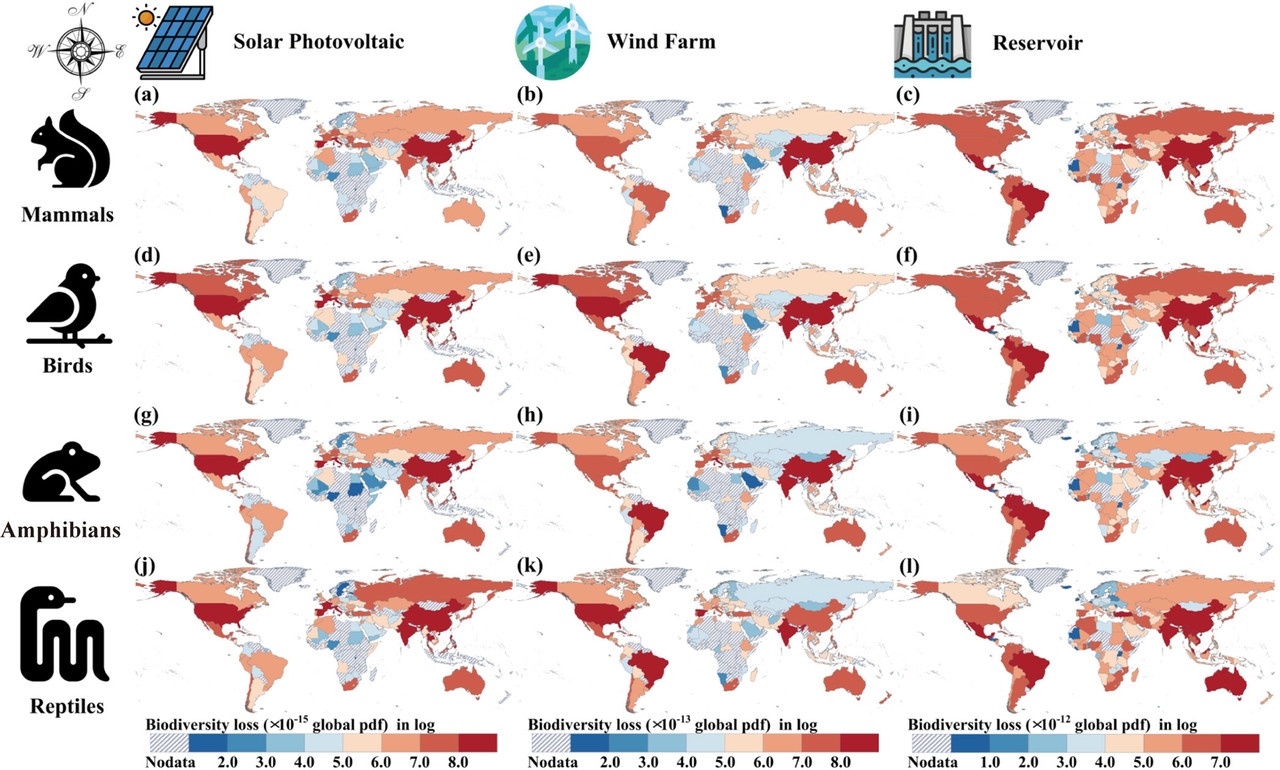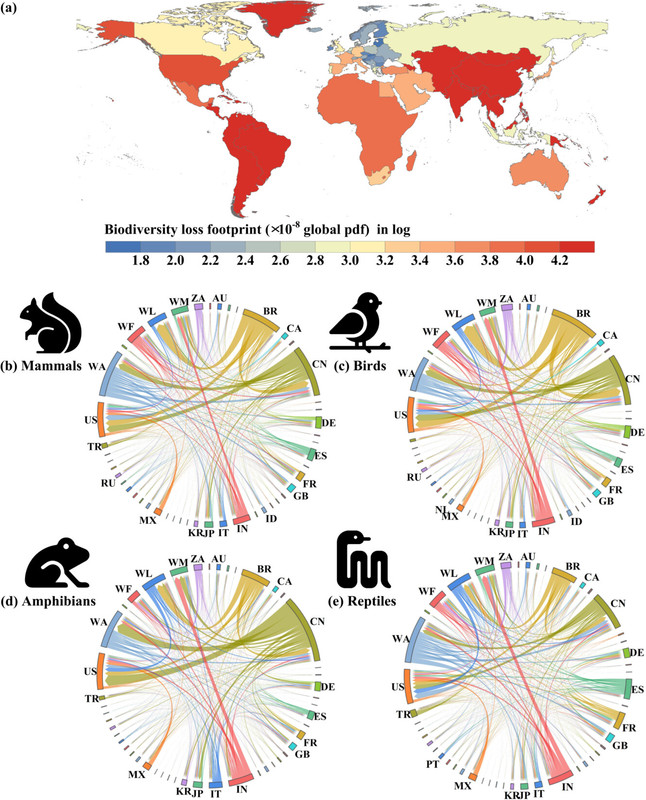Environment & Energy
Related: About this forumImpact of So Called "Renewable Energy" on Biodiversity (Not That We Really Care).
The paper to which I'll briefly refer is this one: Biodiversity Impacts of Land Occupation for Renewable Energy Infrastructure in a Globally Connected World Jingyu Wang, Cai Li, Zhongci Deng, Jamie Carr, Lindsay C. Stringer, Keke Li, Yuanchao Hu, Chen Zeng, Kai Huang, Sha Peng, and Zhen Wang Environmental Science & Technology 2025 59 (19), 9529-9539
I like to say that unlike the bourgeios current membership of the Sierra Club, who never see a wilderness they don't want to turn into an industrial park for energy production with so called "renewable energy," I'm a John Muir type of environmentalist. John Muir founded the Sierra Club to prevent the conversion of wilderness, the Hetch Hetchy Valley in Yosemite, into an industrial park for renewable energy.
It was a fight he lost over a century ago.
Here we are today.
As I often point out, although it's unpopular on our end of the political spectrum to acknowledge it as such, the two nuclear reactors at Diablo Canyon in California, on an industrial foot print of about 12 acres, have a long history of producing more energy, more reliably, than all the wind turbines in the State of California. The purpose for tearing the shit out California wilderness to build industrial parks has never been about addressing dangerous fossil fuels. It has always been about attacking nuclear energy. I have not been constrained in pointing out that to my mind this is a fucking disgrace.
The cult of so called "renewable energy" is advertised by our "but her emails" and "too old Joe" media as "green," but as the paper cited at the outset points out in the first few paragraphs, the low energy density of so called "renewable energy" destroys greenery of all kinds:
However, renewable energy technologies, such as solar, wind, and hydroelectric power have lower energy densities than traditional fossil fuels. (8) As a result, renewable energy infrastructure requires approximately 10 times more land area to produce the same amount of energy as typical fossil fuel facilities. (9−11) This heightened land demand encroaches on agricultural fields, wilderness areas, and protected habitats, exacerbating biodiversity loss even with conservation efforts. (12−14) This expansion threatens the existence of species and accelerates biodiversity loss at both local and global scales. (12,15−19) For example, wind farms can cause fatalities of avian species due to turbine accidents. (20,21) Additionally, they disrupt natural landscape patterns and the cyclical dynamics of nearby ecosystems by influencing the local climate conditions. This, in turn, can harm biological habitats and lead to significant socioecological costs. (20,22−25) Studies estimate that achieving the Paris Agreement’s targets using solar and onshore wind energy could result in the loss of over 110,000 km2 of natural land, impacting an estimated 1,574 threatened and endangered species. (14) The construction of reservoirs for hydropower leads to a decline in wildlife populations due to the degradation of natural ecosystems in the surrounding area. (26,27) Such conflict is also known as the “green versus green dilemma” in the context of energy transition. (2,28) The ongoing construction of renewable energy infrastructure has the potential to significantly alter the global landscape, despite its current limited coverage of only 0.4% of ice-free land area. (29,30) Consequently, the potential conflicts between biodiversity conservation and the large land demand for renewable energy infrastructure are likely to become more prominent. (12,31−33)...
I added the bold.
You can, if you wish, get into a stupid argument here about the effect of those disgusting short lived wind industrial parks on birds. It's not, in my experience, an argument worth having, since worship of so called "renewable energy" has a certain quality of - how should I say this? - religious dogma. (I once posted here reference to a book I downloaded called "Why Birds Matter" here, but it was a long time ago and I can't find it. The link apparently allows people to download the book for free. I haven't tested the link, since I already downloaded the book at a university library.)
Some graphics from the paper:

The caption:

The caption:

The caption:

The caption:
The authors write:
Not to criticize the authors who have raised an important point, let's be clear on something, OK?
There is no "energy transition." We are burning more dangerous fossil fuels than ever before and dumping the waste directly into the planetary atmosphere where it is killing millions of human beings each year, while destroying vast ecosystems. This, of course, is less interesting than whining insipidly about Fukushima. The trillions of dollars squandered on an "investment" in wind and solar energy has not a fucking thing to do with "climate change" which is now better described as "extreme global heating." Things are getting worse faster.
New Weekly CO2 Concentration Record Set at the Mauna Loa Observatory, 430.86 ppm
There isn't "effective management" of renewable energy infrastructure. It's a fucking insane free for all driven by money and public stupidity, running on bulldozers, chain saws, and vast open pit mines that will be leaching toxins for centuries.
If I sound angry, it's because I am.
You can drive your fucking electric car to a Sierra Club meeting and look at pictures of wind turbines all you want. You can declare yourself "green." You can put solar cells on the roof of your McMansion without a single reflection on the nature of electronic waste, patting yourself on your back, and putting a bumper sticker with a Panda on that electric car.
Nevertheless the results are in.
Birds matter and as a result, mass to energy density, land to energy density, matters.
History will not forgive us, nor should it.
Have a nice holiday weekend. Enjoy your cookouts.